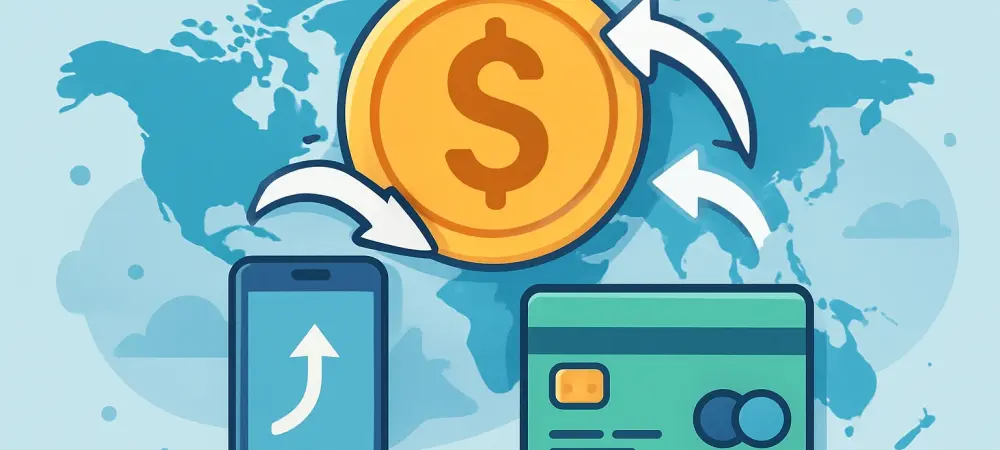Imagine a world where sending money across borders is as quick and simple as sending a text message, even between regions with limited financial infrastructure. In today’s global economy, inefficiencies in cross-border payments—such as delays spanning days, exorbitant fees, and lack of transparency—continue to hinder businesses and individuals alike. Enter RTGS.global, a platform designed to tackle these persistent challenges with cutting-edge technology. This review dives into the transformative potential of RTGS.global, exploring its features, real-world applications, and the broader impact on international transactions, while assessing how it stands as a beacon of innovation in the fintech landscape.
Core Features and Technological Edge
Instant Settlement Capabilities
At the heart of RTGS.global lies its instant settlement mechanism, a feature that redefines the speed of cross-border transactions. Unlike traditional systems where transfers can take days due to banking cut-off times and intermediary processes, this platform enables real-time, peer-to-peer settlements. Operating on a 24/7/365 basis, it ensures users have uninterrupted access to their funds, a critical advantage for time-sensitive business dealings or urgent personal remittances.
Beyond speed, the reliability of this mechanism stands out as a cornerstone of its design. By leveraging a robust technical framework, RTGS.global minimizes the risk of transaction failures, offering a level of consistency that traditional correspondent banking often lacks. This capability not only boosts user confidence but also sets a new standard for what financial institutions can expect from payment systems in a hyper-connected world.
Seamless Single API Integration
Another standout feature is the single API integration model, which simplifies connectivity for financial institutions. This approach eliminates the cumbersome need for multiple proprietary systems, allowing banks and payment service providers to link with the platform through a unified interface. Such streamlining reduces operational complexity, cutting down on both time and cost for institutions looking to expand their cross-border capabilities.
The impact of this model extends to liquidity optimization, a key concern in international payments. By enabling direct connections without intermediaries, RTGS.global helps institutions manage their funds more efficiently, freeing up capital that would otherwise be tied up in lengthy settlement processes. Compared to conventional methods, this integration represents a significant leap forward in operational efficiency.
Performance in Real-World Scenarios
Case Study: Tajikistan-Turkey Corridor
To understand the practical impact of RTGS.global, consider the recently launched instant settlement corridor between Tajikistan and Turkey. This initiative, facilitated through a partnership between PayPorter, a major Turkish money transfer operator, and Humo Bank, a rising player in Tajikistan, showcases the platform’s ability to deliver tangible results. Businesses benefit from faster invoice settlements, while individuals, particularly remittance workers, enjoy affordable and rapid transfers to support their families.
The economic relevance of this corridor cannot be overstated, with annual trade volume between the two nations exceeding $621 million. RTGS.global aims to capture a notable share of this market by 2026, demonstrating its scalability. Unique use cases, such as enabling financial inclusion in underserved regions, further highlight how this technology addresses gaps left by traditional systems, fostering economic activity in emerging markets.
Emerging Trends and Market Adoption
Beyond specific corridors, RTGS.global aligns with broader trends shaping cross-border payments. The shift toward real-time settlements reflects a growing demand for immediacy in financial transactions, while transparency has become a non-negotiable expectation among users. Additionally, the increasing adoption of such technologies in developing economies signals a move toward democratizing access to global financial networks, a mission that RTGS.global champions.
The platform’s performance in navigating these trends positions it as a leader in the fintech space. By focusing on markets often overlooked by legacy systems, it not only addresses current needs but also anticipates future demands, such as the integration of digital-first entities. This adaptability suggests a strong foundation for sustained relevance in a rapidly evolving industry.
Challenges in Scaling and Implementation
Despite its promise, RTGS.global faces hurdles in achieving widespread adoption. Technical challenges in scaling the network to accommodate a growing number of transactions and participants remain a significant barrier. Ensuring consistent performance across diverse infrastructures requires ongoing investment in system enhancements, a task that demands both resources and expertise.
Regulatory complexities add another layer of difficulty, as cross-border payments must comply with varying laws across jurisdictions. Navigating this patchwork of rules often slows down expansion efforts. Moreover, resistance from traditional banking systems, which may view such innovations as disruptive, poses a market challenge that RTGS.global counters through strategic partnerships and continuous dialogue with stakeholders.
Future Trajectory and Industry Impact
Looking ahead, the potential for RTGS.global to reshape cross-border payments appears vast. Plans to expand multi-jurisdictional networks suggest a future where instant settlements become the norm rather than the exception. Capturing significant market share by 2026 remains a key target, with ambitions to connect more financial institutions across both developed and emerging regions.
The long-term impact on global financial inclusion stands as a particularly compelling prospect. By reducing reliance on costly intermediaries, the platform could play a pivotal role in leveling the playing field for underserved economies. Integration with digital-first entities further promises to bridge gaps between traditional finance and modern tech-driven solutions, paving the way for a more inclusive financial ecosystem.
Final Assessment and Next Steps
Reflecting on this evaluation, RTGS.global proves to be a robust and innovative solution that tackles long-standing inefficiencies in international payments. Its instant settlement and single API integration features demonstrate remarkable performance in real-world applications like the Tajikistan-Turkey corridor. The platform’s alignment with market trends and focus on emerging economies underscore its transformative potential in the fintech arena.
Moving forward, stakeholders should prioritize collaboration to address regulatory and technical barriers, ensuring smoother scalability. Financial institutions are encouraged to explore partnerships with platforms like RTGS.global to stay competitive in a rapidly changing landscape. Additionally, continued investment in technology enhancements will be crucial to maintain reliability as adoption grows, setting the stage for a future where global transactions are as seamless as local ones.

